
Table of Contents
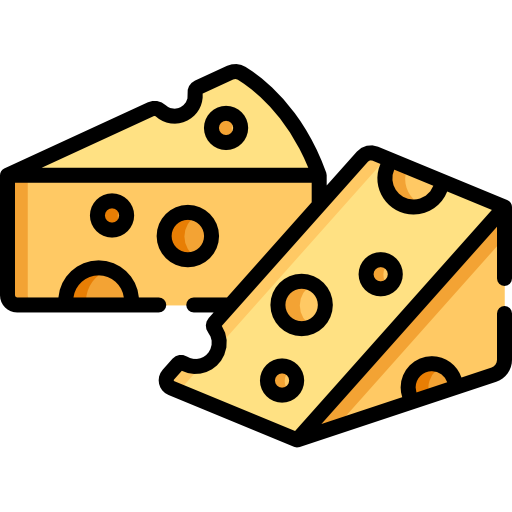
Introduction
A while back, I attempted to make ricotta cheese and whey protein powder (see Cheese and Whey - A Failed Experiment). But after getting a cheese making kit for my birthday (thanks Sean), it was time to try again making homemade cheese.
Turns out, many homemade cheeses are not only delicious, but fairly simple to make as well. Here are some of my favorites for both taste and simplicity.

Acid vs Sweet Whey
But first, let's talk about whey, the leftover liquid separated out from the cheese curds. There are 2 types of whey: acid whey and sweet whey.
Acid whey is the liquid whey leftover from cheeses made with acid, such as citric acid, lemon juice, or white vinegar. These are typically soft cheeses, namely ricotta, cottage cheese, paneer, cream cheese, and even Greek yogurt.
On the other hand, sweet whey derives from cheeses made with rennet. These are your hard cheeses, such as cheddar, mozzarella, swiss, gouda, and feta.
Don't discard the whey! There are plenty of uses for your leftover liquid whey, which I will discuss more below. Acid and sweet whey are different ingredients, so therefore they have some different use cases.
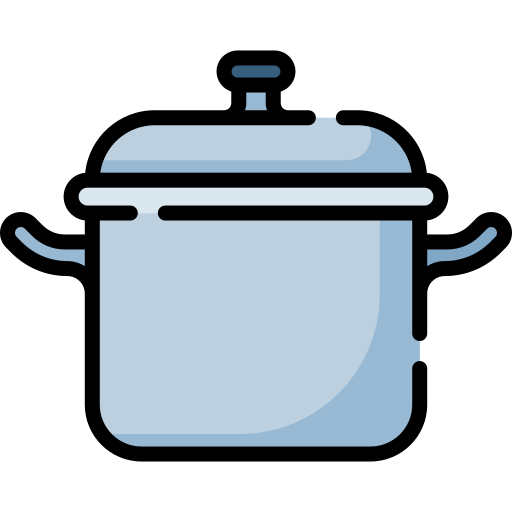
Ricotta Cheese
Ricotta cheese is a simple soft Italian cheese that's a great intro cheese. Ricotta in Italian means "recooked", because it was traditionally made using the leftover sweet whey from making other cheeses, mainly mozzarella.
You can use any fat content milk here. I'd recommend whole milk for the first time to get the hang of it and for a higher yield, then trying skim milk after for a lower calorie, lower fat, higher protein cheese. I will show nutrition facts for ricotta made with both whole milk and skim milk at the end.
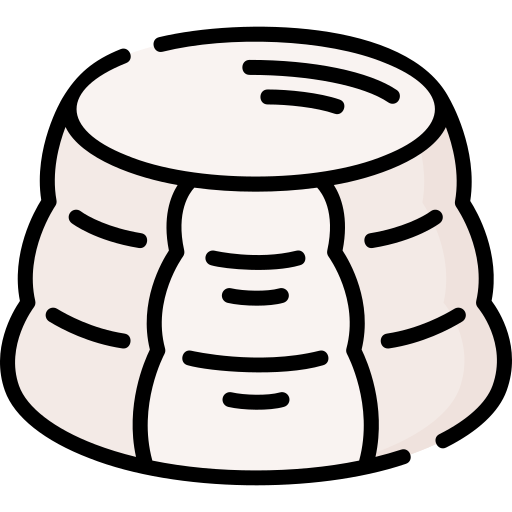
Ingredients

Instructions

Uses

Nutrition Facts
Per 1/2 cup (124 g) serving
Scroll to the right to read information about every variation

Labneh Cheese
Labneh is possibly the easiest "cheese" to make, and it's barely even cheese. It's essentially just strained yogurt for a thick and creamy dip. Imagine cream cheese crossed with Greek yogurt.
I'm going with plain nonfat Greek yogurt for a high protein cream cheese-like spread and dip, but you can use whole milk yogurt as well. The table at the end will show the nutrition facts for both skim and whole milk variations.

Ingredients

Instructions

Uses

Nutrition Facts
Per 2 tbsp (30 g) serving
Scroll to the right to read information about every variation

Leftover Whey Uses
The leftover liquid whey is not just some scrap to dump down the sink. Whey can be a great ingredient in many recipes for additional protein and fresh flavor.
While sweet whey mild, slightly sweet, and less acidic, acid whey is tangier and more acidic. This makes sweet whey best when you don’t want tang, such as breads, pasta water, etc. On the other hand, acid whey is best for soaking, fermenting, marinating, soups, or anywhere tang is welcome:

Sources
This post may contain affiliate links

Introduction
A while back, I attempted to make ricotta cheese and whey protein powder (see Cheese and Whey - A Failed Experiment). But after getting a cheese making kit for my birthday (thanks Sean), it was time to try again making homemade cheese.
Turns out, many homemade cheeses are not only delicious, but fairly simple to make as well. Here are some of my favorites for both taste and simplicity.

Acid vs Sweet Whey
But first, let's talk about whey, the leftover liquid separated out from the cheese curds. There are 2 types of whey: acid whey and sweet whey.
Acid whey is the liquid whey leftover from cheeses made with acid, such as citric acid, lemon juice, or white vinegar. These are typically soft cheeses, namely ricotta, cottage cheese, paneer, cream cheese, and even Greek yogurt.
On the other hand, sweet whey derives from cheeses made with rennet. These are your hard cheeses, such as cheddar, mozzarella, swiss, gouda, and feta.
Don't discard the whey! There are plenty of uses for your leftover liquid whey, which I will discuss more below. Acid and sweet whey are different ingredients, so therefore they have some different use cases.

Ricotta Cheese
Ricotta cheese is a simple soft Italian cheese that's a great intro cheese. Ricotta in Italian means "recooked", because it was traditionally made using the leftover sweet whey from making other cheeses, mainly mozzarella.
You can use any fat content milk here. I'd recommend whole milk for the first time to get the hang of it and for a higher yield, then trying skim milk after for a lower calorie, lower fat, higher protein cheese. I will show nutrition facts for ricotta made with both whole milk and skim milk at the end.

Ingredients
- 1/4 cup (60 g) Water
- 1/2 tbsp (11 g) Citric acid
- 1 gal (3840 g) Whole milk
- 1 tsp (6 g) Salt

Instructions
- Before you start, let your milk sit on the counter for about 30 minutes to come up to near room temerature. Warming up the milk beforehand means it will take less time to get to temperature later, and also reduces the risk of scorching
- In a small pot, bring water to a boil over high heat. Remove from the heat, and allow it to cool for 10 minutes. This is to sterilize the water. Stir in the citric acid with a spoon until fully dissolved.
- In a large pot, pour in your milk. Slowly drizzle in the citric acid mixture while gently stirring. Stir gently up and down, not in a clockwise or counterclockwise motion.
- Turn the heat to medium, and allow the milk to heat up to 185F (uncovered), stirring occasionally and gently to prevent scorching. This may take about 15 minutes.
- When at 185F, you should see the cheese curds starting to separate from the liquid whey. Remove the pot from the heat, cover, and let rest for 20 minutes.
- Line a strainer with a cheese cloth, and place the strainer inside a large bowl. You can also use a fine mesh strainer over a large bowl instead of a standard strainer plus cheesecloth combination.
- Carefully pour the curds into the strainer, leaving the curds in the strainer and the liquid whey in the bowl below.
- Add salt to the cheese curds, and stir until fully dispersed. Leave the cheese to drain in the collander for 15 minutes.
- Transfer both the ricotta and the liquid whey to airtight containers. Store for up to 1 week in the fridge.
- I ended up with about 700 g (just over 5.5 cups) of ricotta using whole milk, and TODO g of ricotta using skim milk (about TODO cups). The nutrition facts for both whole milk and skim milk versions are below for a 1/2 cup (124 g) serving.
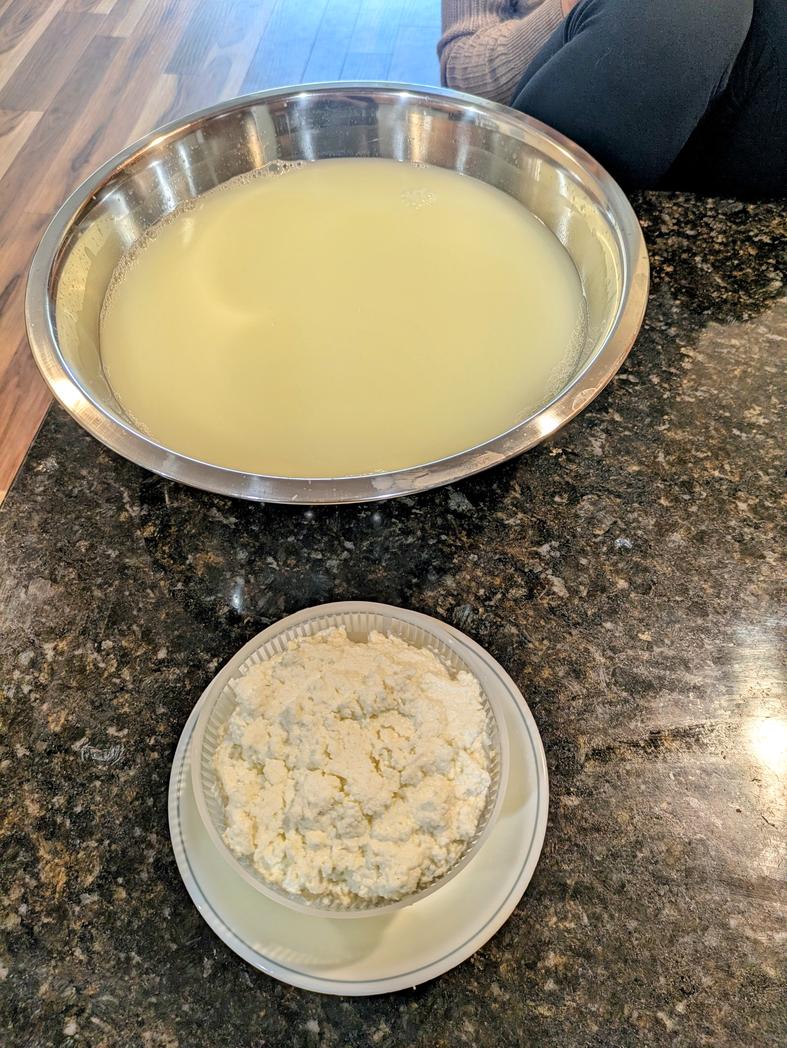

Uses
- Add ricotta into your Banana Protein Pancakes or Yogurt Waffle batter
- Bake a cheesecake with ricotta
- Dollop ricotta on top of your Home Oven Baked Pizza
- Make a lasagna or ricotta gnocchi
- Mix ricotta into a Spinach & Onion Frittata
- Replace cottage cheese with ricotta in savory recipes, such as Leaner Eggplant Rollatini or Hassle Free Eggplant Parm
- Replace Greek yogurt with ricotta in baked goods, like No Bake Homemade Tiramisu or No Bake Cheesecake Bars
- Top your Pumpkin Protein Pancakes or fill your Whole Wheat Crepes with ricotta
- Use ricotta as a spread or dip

Nutrition Facts
Per 1/2 cup (124 g) serving
| Nutrient | Ricotta Cheese Skim Milk |
Ricotta Cheese Whole Milk |
|---|---|---|
| Calories | 100 | 186 |
| Protein | 16.0 g | 9.4 g |
| Fat | 1.3 g | 12.6 g |
| Net Carbs | 2.0 g | 9.0 g |

Labneh Cheese
Labneh is possibly the easiest "cheese" to make, and it's barely even cheese. It's essentially just strained yogurt for a thick and creamy dip. Imagine cream cheese crossed with Greek yogurt.
I'm going with plain nonfat Greek yogurt for a high protein cream cheese-like spread and dip, but you can use whole milk yogurt as well. The table at the end will show the nutrition facts for both skim and whole milk variations.

Ingredients
- 4 cup, 32 oz (908 g) Plain nonfat greek yogurt
- 1 tsp (6 g) Salt

Instructions
- Place a fine mesh strainer over a medium bowl. You can also use a cheesecloth in a strainer over a bowl.
- Add the yogurt to the strainer, and mix in salt with a silicone spatula. Place the strainer over the bowl into the fridge, and allow it to drain (uncovered) for about 24 hours.
- Transfer the cheese to an airtight container, and store in the fridge for up to 1 week. Discard the liquid in the bowl.
- I ended up with about 720 g of labneh cheese, or about 1.5 cups. This means 24 servings of 2 tbsp (30 g) each
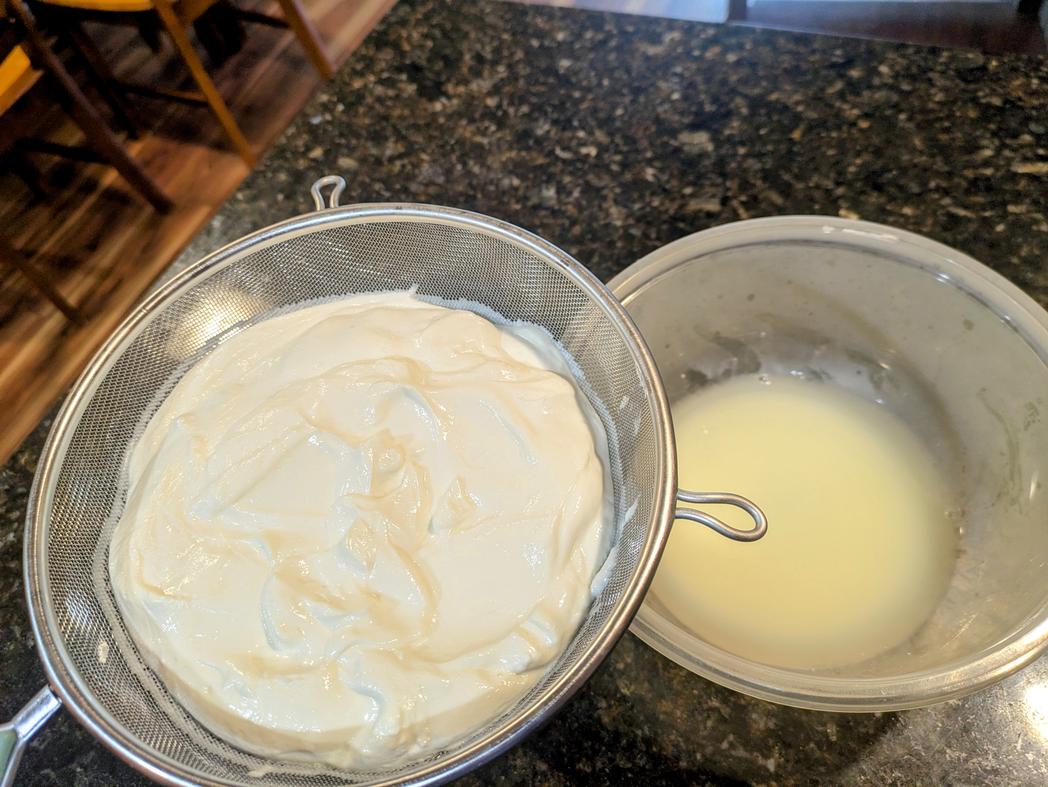
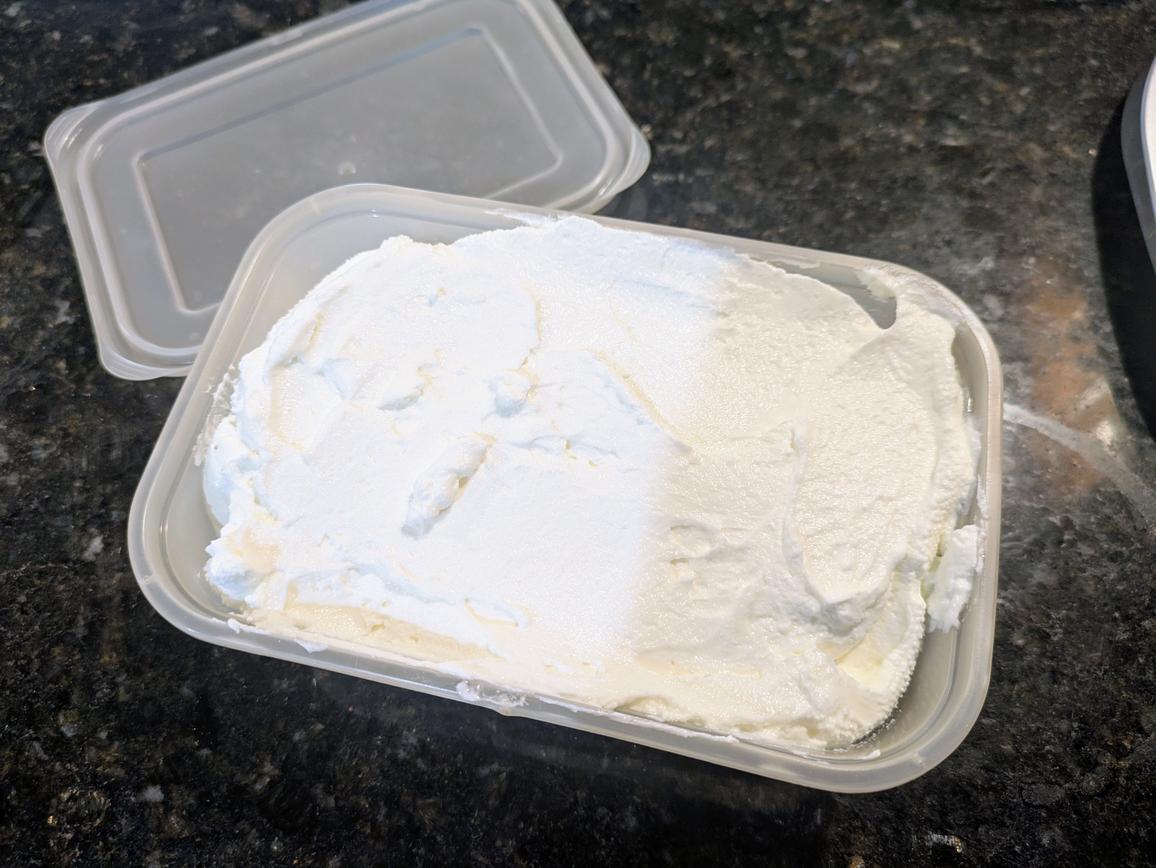

Uses
- Dip carrot sticks, sliced peppers, or pita chips in labneh
- Replace mayo, sour cream, or cream cheese in dips and dressings with labneh for higher protein and less fat
- Serve alongside grilled meats, fish, or vegetables
- Spread labneh on an Whole Wheat Bagel, Whole Wheat Toast, Almond Flour Bagel, or Gluten Free Millet Bread like cream cheese
- Stir into soups for creaminess and tang
- Use labneh to make Greek Yogurt Gnocchi
- Use labneh as a salad dressing

Nutrition Facts
Per 2 tbsp (30 g) serving
| Nutrient | Labneh Cheese Skim Milk |
Labneh Cheese Whole Milk |
|---|---|---|
| Calories | 22 | 37 |
| Protein | 3.9 g | 3.4 g |
| Fat | 0.1 g | 1.9 g |
| Net Carbs | 1.4 g | 1.4 g |

Leftover Whey Uses
The leftover liquid whey is not just some scrap to dump down the sink. Whey can be a great ingredient in many recipes for additional protein and fresh flavor.
While sweet whey mild, slightly sweet, and less acidic, acid whey is tangier and more acidic. This makes sweet whey best when you don’t want tang, such as breads, pasta water, etc. On the other hand, acid whey is best for soaking, fermenting, marinating, soups, or anywhere tang is welcome:
- Boil your rice or pasta in whey
- Cook a veggie soup with whey instead of broth
- Cook oatmeal, quinoa, rice, or any other grains in whey instead of water
- Feed your sourdough starter with whey instead of water
- Ferment vegetables in whey
- Just drink it!
- Make a Copycat Chobani Yogurt Drink or Probiotic Chocolate Kefir with liquid whey in place of milk, yogurt, or kefir
- Marinade meats with whey instead of buttermilk
- Replace milk in drinks with liquid whey, like Green Hemp Smoothie, Golden Milk, Simple Protein Shake, or Chocolate Nut Milkshake
- Replace milk in healthier desserts with liquid whey, such as Amaretti Cookies with Dates, Dual Bean Date Brookies, or Naturally Sweetened Oatmeal Raisin Cookies
- Replace milk in protein snacks with liquid whey, like Baked Protein Bars, No Nut Protein Banana Bread, Crustless Sweet Potato Pie, or Edible Protein Cookie Dough
- Replace water in bread doughs with liquid whey, such as No Yeast Whole Wheat Burger Buns, Whole Wheat Pita Bread, Whole Wheat Sweet Potato Loaf, Whole Wheat Hot Pretzels, or 100% Whole Wheat Bread
- Replace water in gluten free bread doughs with liquid whey, such as Almond Flour Sandwich Loaf, Nordic Nut Loaf, or Gluten Free Millet Bread
- Replace water in pizza doughs and wraps with liquid whey, such as Gluten Free Oat Wraps, Home Oven Baked Pizza, and Oat-Wheat Tortillas
- Soak beans, grains, nuts, or seeds in liquid whey to break down phytic acid and improve digestion, like in my Slow Cooker Dried Beans and 24 Hour Chili
- Use whey in place of buttermilk in Cauliflower Mash Shepard's Pie or Irish Soda Bread
- Water your plants that prefer a slightly acidic soil (with 1 part whey to 10 parts water)

Sources
- The Ultimate Cheese Making Kit: Ricotta
- The Spruce Eats: Homemade Ricotta Cheese
- The Ultimate Cheese Making Kit: Labneh
- Feel Good Foodie: Homemade Labneh Recipe
- The Spruce Eats: Labneh Cheese
- Agro Complex: Sweet Whey vs Acid Whey
- The Spruce Eats: What is Whey?
- The Spruce Eats: Creative Whey Recipes and Uses
- Don't Waste the Crumbs: 45+ Ways to Use Whey and 5 Ways to Make it